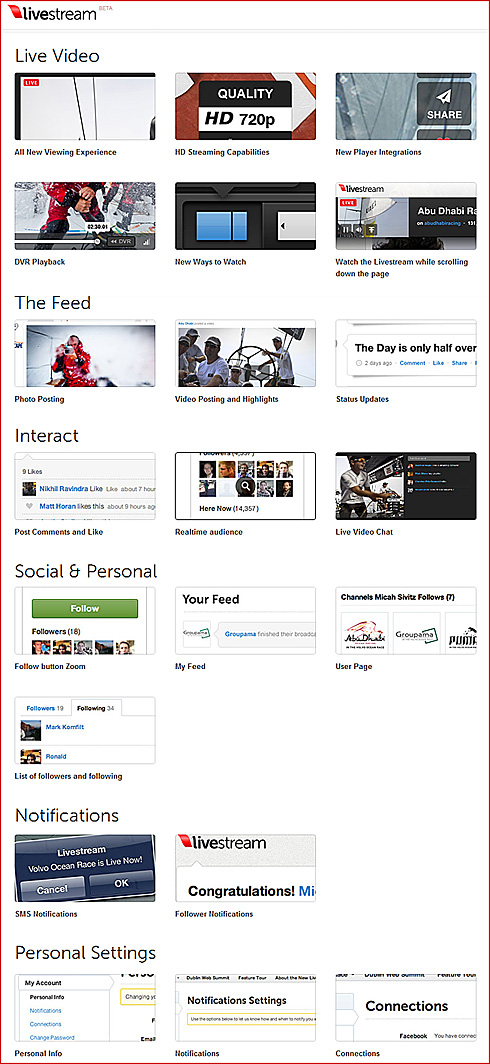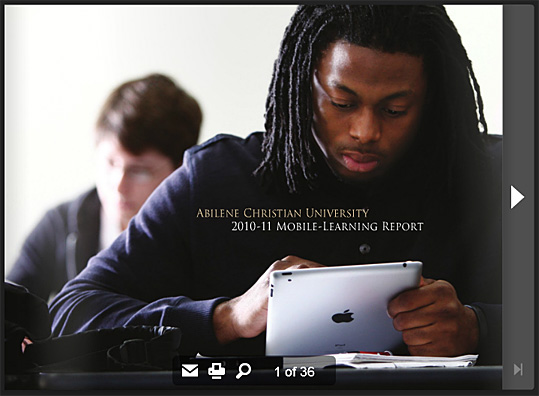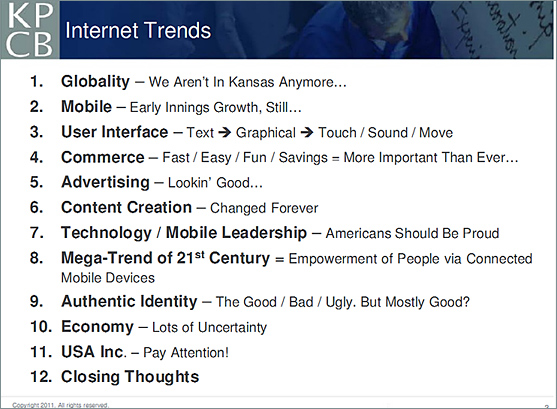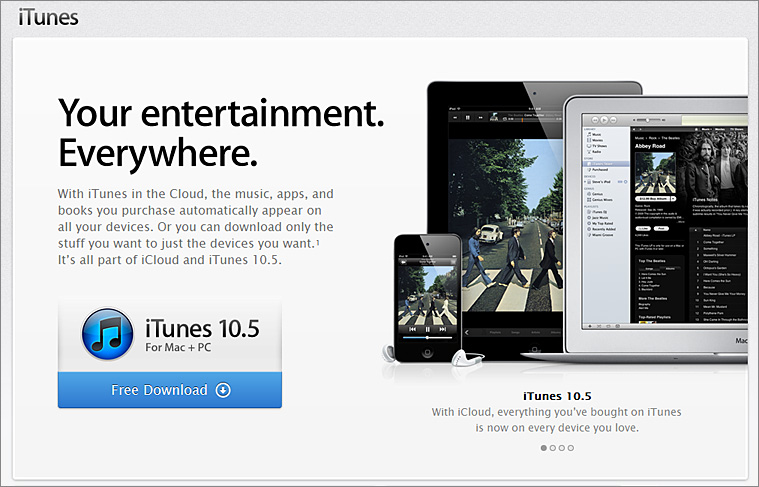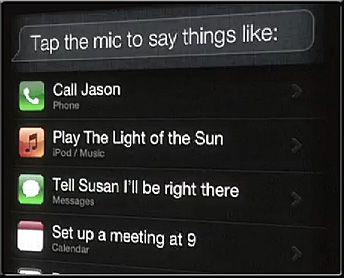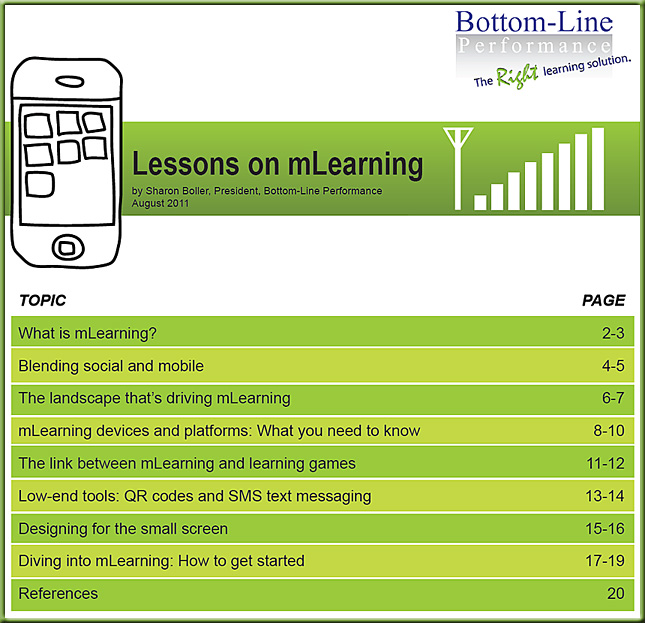Mobile initiatives ‘breaking down the walls of the classroom’ at Abilene Christian U — from campustechnology.com by Dian Schaffhauser
Excerpt:
Small private college Abilene Christian University has entered the fourth academic year of its mobile education initiatives, and the program’s momentum and influence is still growing. The Texas institution, which has added the Apple iPad to its list of devices made available to students and faculty, along with the iPhone and iPod touch, recently hosted a Connected Open House, with attendance by people from dozens of other schools. The university is also running numerous mobile-oriented research projects among its faculty and recently opened three new mobile research centers sponsored by a sizeable grant from AT&T.
A common theme is emerging from Abilene Christian’s multiple programs, said Director of Educational Innovation Bill Rankin.
…
Also see:
Gartner identifies the Top 10 Strategic Technologies for 2012
Analysts Examine Latest Industry Trends During Gartner Symposium/ITxpo
Excerpt:
The top 10 strategic technologies for 2012 include:
- Media Tablets and Beyond.
- Mobile-Centric Applications and Interfaces.
- Contextual and Social User Experience.
- Internet of Things. The key elements of the IoT include:
Embedded sensors, Image Recognition, Near Field Communication (NFC) payments - App Stores and Marketplaces.
- Next-Generation Analytics.
- Big Data.
- In-Memory Computing.
- Extreme Low-Energy Servers.
- Cloud Computing.
WorkTech11 West Coast: A report from the trenches — from thefutureofwork.net by Jim Ware
Headings/excerpt:
- Randy Knox
- Nokia Silicon Valley
- Hamid Shirvani, President California State University, Stanislaus
- Urban Design: Panel Debate
- Kevin Kelly, author, “What Technology Wants”
- Nathan Waterhouse, Ideo
- Marie Puybaraud, Johnson Controls, and Sudhakar Lahade, Steelcase
- Vwork: Michael Leone, Regus, and Philip Ross, CEO Unwired and the Cordless Group
- Rational Mobility: Kevin Kelly, GSA (The “Other” Kevin Kelly)
- Going Mobile: Dawn Birkett, Salesforce.com and Bryant Rice, DEGW
- Mobility and Virtual Work: Panel Debate
Polycom® RealPresence™ Mobile — now for both the iPad and Android-based devices
Take video collaboration mobile with the first enterprise HD software solution for Motorola and Samsung tablets
Polycom® RealPresence™ Mobile is a new, free-to-download software solution that extends our legendary HD video collaboration technology, built on the Polycom RealPresence Platform, beyond the office and conference room to your Apple® iPad® 2, Motorola XOOM™ and Samsung Galaxy Tab™ tablet PCs.
Also see:

On October 12, Polycom president and CEO Andy Miller gave a keynote address during the CTIA Enterprise & Applications™ 2011 conference in San Diego, Calif., discussing video collaboration in today’s mobile society. During his keynote, Andy presented key industry trends, and share how Polycom is delivering video to mobile platforms, extending HD video collaboration technology beyond the office and conference room. The keynote included a live demonstration of a game-changing mobile video solution for enterprises – the Polycom® RealPresence™ Mobile.
Vidyo: Video conferencing on the iPad, iPhone and Android tablets and smartphones
Ad-hoc Room System

VidyoMobile on iPad 2 joining an HD multipoint video conference at 720p with 4 other laptops and a room system. (Note: This picture has not been photoshopped in any way.)
iPad studies at Abilene Christian U. dig deep into learning outcomes — from ConvergeMag.com by Tanya Roscorla
From DSC: Expectations, today, are getting hard to beat
Since Apple’s event yesterday, I’ve heard some conversations on the radio and reviewed several blog postings and articles about Apple’s announcements…many with a sense of let down (and some with the usual critical viewpoints by the backseat drivers out there who have never tried to invent anything, but who sure like to find fault with everyone else’s inventions and innovations).
It made me reflect on how high our expectations are becoming these days! It wasn’t enough that iCloud is coming on 10/12 (and who knows the directions that will take society in). It wasn’t enough to introduce some serious software-based innovations such as Siri (which bring some significant advancements in the world of artificial intelligence) or AirPlay for the iPhone. It wasn’t enough to enter into the multi-billion dollar card industry with their new Cards app for the iPhone. Wow…tough crowd.
What might these announcements — and expectations — mean for education?
Well…I can see intelligent tutoring, intelligent agents, machine-to-machine communications, the continued growth of mobile learning, learning from the living room, the initiation of programs/events caused by changes in one’s location, continued convergence of the television/computer/telephone, continued use of videoconferencing on handheld devices, cloud-based textbooks/apps, and more.
Some items from Apple today:
- iCloud goes live on October 12

- iPhone 4S launches October 14, $199, $299, $399, AT&T, Verizon, Sprint, US & International
- New iPod Nano Is Clock and Fitness Watch in One
- Apple iPhone 4S: The 4 most important features
- Apple Unveils Siri, the iPhone 4S Voice Assistant
Apple has unveiled Siri, a new iPhone 4S feature that lets you complete tasks on your phone by talking to it. During an on-stage demo at Apple’s headquarters in Cupertino, CA, Apple VP Scott Forstall demonstrated Siri’s ability to process natural language and respond accordingly. When he asked the iPhone 4S, “What’s the weather like today?”, it responded with the weather forecast. It is capable of parsing natural human language, rather than simple commands. - AirPlay Mirroring coming to iPhone 4S, not just for iPads
- New iPod touch: cheaper, iOS 5, and now in white
- Apple Unveils iPhone 4S: Faster CPU, Better Camera and Voice Controls
From DSC:
This posting evolved after having read $500 billion TV market new battlefield for Internet companies (from forbes.com and the Trefis Team therein) as well as the posting at Future TV disruption – Forbes says it’s worth half a trillion dollars for Internet companies (from appmarket.tv).
As the convergence — and the movement of data/apps/content/services towards the cloud — continues, I wanted to jot down some thoughts re: the current field:
- Apple, Google, Cisco and Microsoft seem to be solid players to watch in terms of cloud-based computing architectures, tools, and functionality — something to keep in mind when planning for the future directions of your organization’s set of tools and technologies.
- Personally, I vote for vendors that “get the web.” Apple and Google have traditionally been very solid innovators on the web and have turned in solid report cards in terms of innovation, performance, and web-based applications. (Adobe — with their Macromedia purchase years ago and their current lineup of tools — has also done a pretty good job, but doesn’t have the arsenal to make my top 4 picks here.)
- I don’t need to say much about Apple in terms of innovation — as they have out innovated every company on the planet while becoming the world’s most valuable company in terms of market cap. Apple is on the verge of adding enormously powerful, cloud-based functionality and apps to their ecosystem when they introduce iCloud this fall (and perhaps a web-connected/smart TV type of device in the future). They have proven themselves to be #1 in terms of working with multimedia-based content — its creation and distribution. Given the continuing trend of the convergence taking place with computers, telephones, and televisions, the ability to create and work with multimedia is key for many technology-related vendors, and, in my mind, Apple leads in this area.
- Google has shown themselves to be solid innovators as well — and they “get the web.” Their current set of web-based apps — including Google Docs, Calendar, Hangouts, Reader, Alerts, etc. — provide a solid menu of web-based apps to choose from.
- Cisco has proven themselves to be innovative as well, and owns some powerful technologies in their WebEx Meeting Center, Videoscape, networking infrastructures, and some of its other tools.
- Though traditionally not a leader/innovator on the web, I think that Microsoft has deep pockets and they are a savvy business (having just purchased Skype as an example). So with SharePoint, Skype and Office 365, Microsoft is laying the foundation for a solid, web-based collaboration space.
Having said this, one can see that it is getting harder to practice the KISS principle in the IT departments out there. But where we can do so, it makes sense to do so — as there is less finger pointing and more accountability. It’s easier to support a fewer amount of tools and, often times, it seems that things simply work better with a reduced amount of vendors/technologies involved.
- Web-based collaboration tools such as videoconferencing, shared interactive whiteboards, shared document creation, calendars/scheduling, form creation and reporting tools, chat, other
- Cloud-based content/data/apps/services
- Synchronization across multiple types of devices
- Web-based updates (think publishers’ content in addition to apps)
- Storage plans and pricing
- Types of integration and tools a vendor provides on the cloud
- The end user experience and the usability of proposed solutions
- A vendor’s strategic direction(s) for the future









